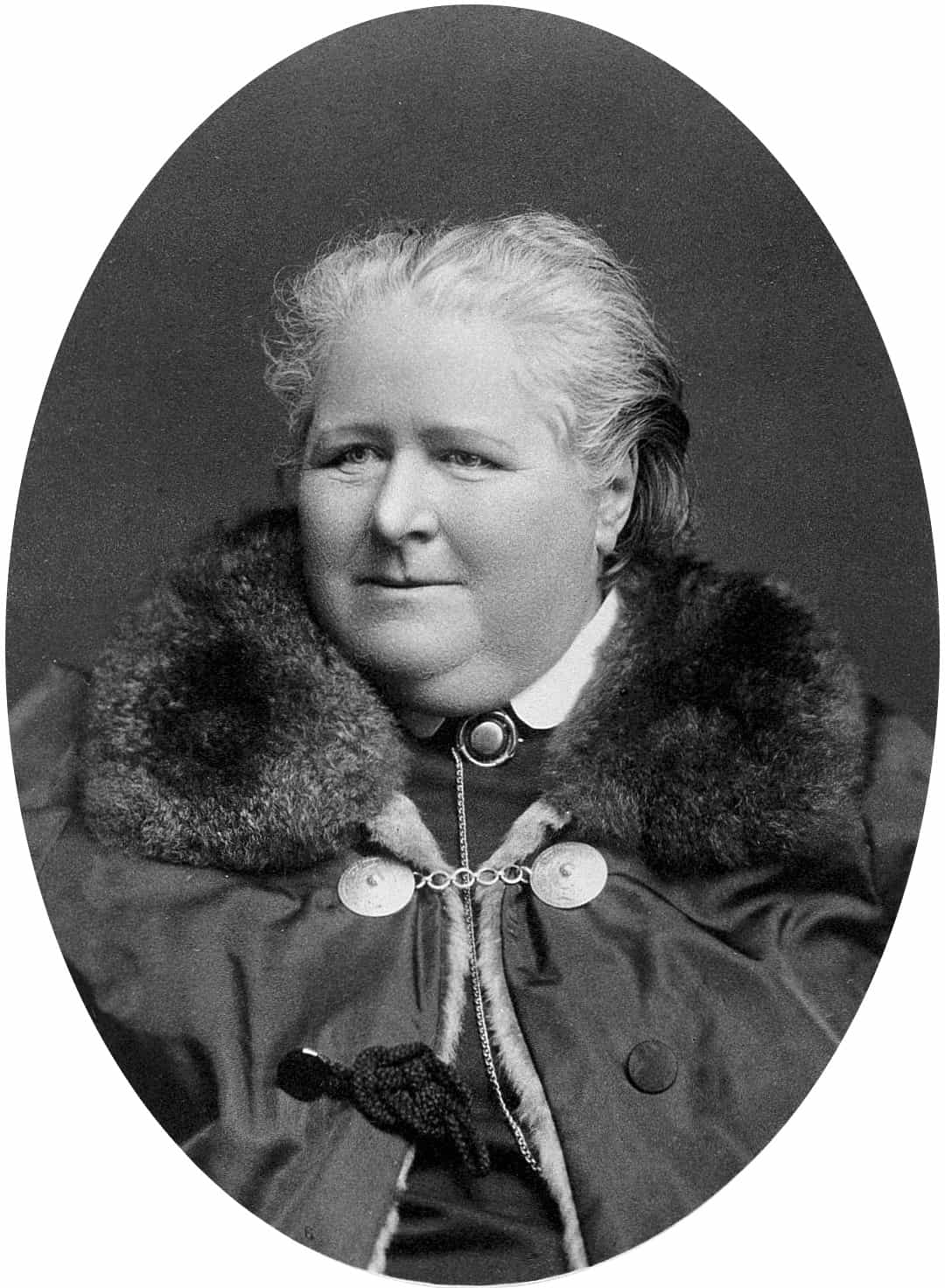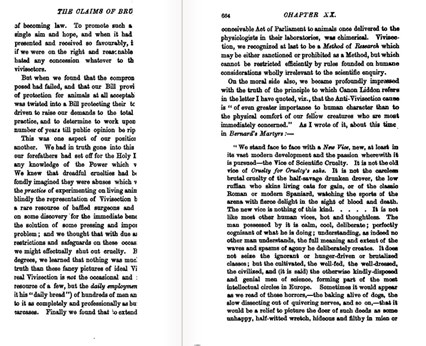Animal welfare would have been far better served over the past 150 years by activists adopting a 3Rs approach sooner – why did they instead take an uncompromising view?
As the Government’s Chief Scientific Advisor Prof Sir Mark Walport makes clear in his speech at the 80th Stephen Paget memorial lecture, many of the issues around animal research which still rear their head today can be traced back to a period 150 years ago, when the UK first legislated to control animal research. This was a genuinely interesting time, with emotions running high. The pace of change towards progressive politics – across issues as diverse as women’s suffrage and animal welfare, was dizzying.
Here it was that the peculiar moral position of animal research came into sharp relief, and the initial moral difficulty of the issue: causing suffering to prevent more widespread suffering, was amplified both by the brutality of some early experiments and early activists’ mischievous claims that all experiments involved excessive suffering.
Active at this time was Frances Power Cobbe, one of history’s more colourful characters and founder of the British Union for the Abolition of Vivisection (BUAV), which today has rebranded as Cruelty Free International. Cobbe was by all accounts wonderfully personable and this comes across strongly in her very readable autobiography. A prominent suffragette, Cobbe became increasingly involved with the burgeoning anti-vivisection movement, with her fervour apparently picking up speed following a spat with Charles Darwin, with whom she had been friendly (before she messed up their friendship by amending and publishing their private correspondence).

Frances Power Cobbe in 1894
I had some questions though. The potted history version of the formation of the BUAV was that it was a breakaway from the Victoria Street Society, which later became the National Anti-Vivisection Society (NAVS). This organisation was suffering an outbreak of reasonableness and had shifted emphasis towards what we’d recognise today as the 3Rs and making the experience of lab animals as good as it could be. The BUAV would not compromise.
But why? As a course of action it didn’t seem to be of benefit to research animals and seemed doomed to fail in the face of rampant diseases like cholera facing local authorities.
There is an explanation though. Unfortunately for the UAR expenses account, it starts on page 662 of Cobbe’s autobiography, which wasn’t scanned properly by Google Books and has the key passages blanked out or obscured by the pink rubber glove of whoever was halfheartedly in charge of scanning it for posterity, so we needed a physical copy.

Explaining how they got to where they were, Cobbe recounts how the Victoria Street Society hadn’t always held such extreme views as the BUAV and tried to advance their own version of an animal research Bill through Parliament which permitted many experiments, although all of them had to be under anaesthetic. She writes:
“The deputation of March 20th to the Home Office was most favourably received, and our Society was invited to submit to Government suggestions respecting the provisions of the intended Bill. These suggestions were framed at a committee held at our office on the 30th March and they were adopted by Government after being approved by its official advisors, and presented by Lord Carnarvon in the House of Lords. The second reading took place on the 22nd May. On that occasion, Lord Coleridge made a most judicious speech in defence of the Bill, and Lord Shaftesbury the long and beautiful one reprinted in our pamphlet ‘In Memoriam’.
The next morning all the newspapers came out with leading articles in praise of the Bill. It is hard now to realise that, previous to undergoing the medical pressure which has twisted the minds - (or not least the pens) – of three fourths of the press, even the great paper which has been our relentless opponent for 17 years was then our cordial supporter. Everything at that time looked fair for us. The Bill, as we had drafted it, did, practically, fulfil Mr Hutton’s aspiration. No experiment whatever under any circumstances was permitted on a dog, cat, horse, ass or mule; nor any other animal except under conditions of complete anaesthesia from beginning to end. The Bill included Licences, but no Certificates dispensing with the above provisions.”
However,
“At this most critical moment, and through the whole month of June, Lord Carnarvon, in whose hands the Bill lay, was drawn away from London and occupied by the illness and death of Lady Carnarvon.”
Note: Lady Carnarvon was in fact dying of puerperal fever, a common and usually fatal infection usually associated with childbirth. The infection had been first described the year before by the Austrian surgeon Theodor Billroth but it was around this time that much medical research was looking at germ theory, advances in which have save countless women from the fate of Lady Carnarvon. Meanwhile, in London, Cobbe writes:
“No words can tell the anxiety and alarm this occasioned us, when we learned that a large section of the medical profession, which had so far seemed quiescent if not approving, had been roused by their chief wire-puller into a state of exasperation at the supposed ‘insult’ of proposing to submit them to legal control in experimenting on living animals, (as they were already subjected to it by the anatomy Act, in dissecting dead bodies). These doctors, to the number of 8,000, signed a Memorial to the Home Secretary, calling on him to modify the Bill so as practically to reverse its character, and make it a measure, no longer protecting vivisected animals from torture, but vivisectors from prosecution under Martin’s Act. This Memorial was presented on the 10th July by a deputation, variously estimated at 900 and 800 doctors, who, in either case, were sufficiently numerous to overflow the purlieus of the Home Office and overawe Mr Cross. On the 10th of August the Bill – essentially altered in submission to the medical memorialists – was brought by Mr Cross into the House of Commons, and was read a second time. On the 15th August 1876 it received Royal Assent and became the Act 89-40, c.77, commonly called the Vivisection Act.”
This didn’t go down well with Cobbe, and pushed her towards a new, absolutist position. As she puts it:
“But when we found that compromise which we had proposed had failed and that our Bill providing the minimum of protection for animals at all acceptable to their friends had failed; was twisted into a bill protecting their tormentors, we were driven to raise our demands to the total prohibition of the practice and to determine to work on that basis for any number of years till public opinion be right for our measure.”
It’s here that things get a bit weird, philosophically speaking. The Vivisection Act was never as toothless as Cobbe claimed, establishing an inspectorate for labs, requiring licensing for all experiments and extending special protections to dogs, cats, horses and monkeys, and didn’t derive from the rival legislation to hers. Yet for her personal narrative this had to be case as the grounds of a great betrayal and Cobbe adds ever more tenuous reasons to justify her now uncompromising position.
“Vivisection, we recognised at last, to be a method of research which may be either sanctioned or prohibited as a method, but which cannot be restricted efficiently by rules founded on humane considerations wholly irrelevant to the scientific enquiry. On the moral side also, we became profoundly impressed with the truth for the principle to which Canon Liddon refers in the letter I have quoted, viz, this that the anti-vivisection cause(s) is of even greater importance to human character than the physical comfort of our fellow creatures who are most immediately concerned.”
Animals, then, weren’t the issue. The issue was the moral character of humans. In fact,
“The Catholic Doctrine, that we owe it to God to be kind to his creatures, exhibits one side of the truth. The doctrine of the intuitionalist Butler, and the utilitarian Bentham, that we owe it to every sentient creature to spare it pain, simply because it is sentient, sets forth the wider truth.” (Page 221)
Bentham’s thought actually (and specifically) allowed animal experiments, but no matter. Hers was a principle which stood against a focus on welfare, which might actually have helped reduce the suffering of research animals and meant the end of compromise.
“I have made this long explanation of our policy because I’m painfully aware that amongst practical people and men of the world, accustomed to compromise on public questions, our adoption of the demand for total prohibition has placed us at a great disadvantage as “irreconcilables” and our movement has appeared as the “Fad” of enthusiasts and fanatics. For the reasons I have given above I think it will appear that while compromise offered any hope of protecting our poor clients from the very worst cruelties, we tried this in earnest, first in Lord Hamilton’s Bill and then in Lord Carnarvon’s Bill. When this last effort failed we had no choice but either to abandon our dumb friends to their fate, or demand for them the removal of the danger.”
Cobbe concludes with some sage advice about claiming that animal research will never yield medical advances:
“I yet deprecate the emphasis which many of our friends have laid on this argument against vivisection. We have gone on off our rightful ground of the simple moral issues of the question (and have seemed to admit what very few of us would deliberately do), that if some important discovery had been made by vivisection, our case against it would be lost or weakened. I have been so anxious to warn our friends against this, as I think, very grave mistake on tactics...”
In other words, a case built on calling animal research a waste of time is fatally undermined by the discovery of new information about, and treatments for, disease, the pace of which throughout the 20th Century became relentless.
So there we have it. Cobbe didn’t get her way introducing a Bill restricting vivisection so became intransigent and uncompromising, ushering in 140 years of astonishingly little progress towards her aims. The ‘moral’ and philosophical founding of the position indeed doesn’t make much sense outside of the closed loop of its own internal logic, and sacrifices animal welfare in the service of burnishing one’s halo. The remaining point, that “we owe it to every sentient creature to spare it pain, simply because it is sentient”, doesn’t even bother to grapple with the central moral difficulty of animal research – what about the ‘pain’ caused to sentient beings by a lack of action? Ergo, we find ourselves back at the semi-religious justifications around ‘moral character’.
It’s also worth remembering that Cobbe was profoundly wrong. How does her assertion that research “cannot be restricted efficiently by rules founded on humane considerations” sit in the light of today’s regulations, or the 3Rs? Animal research is restricted, and now as then the rules aren’t nearly as lax as they are in the imagination of activists.
Her recollection of that time is also a little awry. In May 1875, two draft Bills to regulate the use of living animals in scientific experiments were presented in the Houses of Parliament, one to the House of Lords (Cobbe’s) and one to the Commons a few days later (Darwin’s). Neither became law. Instead, a Royal Commission was established to examine the issue and from that came the 1876 Act, which actually included lots of elements of both Bills, including today’s special protections for primates, dogs, cats and equidae.
Of course, despite advising activists not to denounce animal research as medically ineffective, that’s exactly what Cobbe does, and the reasonable sentences with which one finds oneself nodding approval are followed by things like:
“And when the Day of Judgement comes – scarcely sooner – we shall look for the promised cure of fever and cholera, cancer and consumption by means of vivisection”
Yeah, well, about those: Fever (1907) and Cholera (1897), Cancer (1931) and Consumption (1921).
I like to think I’d have got on with Frances Power Cobbe. I bought her book for the section entitled “The rights of Brutes” but read the whole book as her writing style makes it feel a bit like you’ve been hanging out with an educated, thoughtful, caring and personable individual. I would have disagreed with her shift to the extreme fringes however. She knew that she wasn’t being practical. She knew that by her approach, more animals would suffer. She pointedly and consciously chose her soul over their wellbeing.
I wonder, too, what she’d have made of her own position with the benefit of 140 years of hindsight – the medical advances which, to be fair, had not been coming think and fast up until the late 19th Century suddenly accelerated. The progressive laws of today’s society, the distinct lack of new mothers following Lady Carnarvon to a premature grave and the vaccination against cholera might have seemed distant, but they very obviously weren’t. In fact, in the case of the last one it had already been discovered using animals a decade previous to her writing her autobiography and shown to be successful in humans a year before. She was bang wrong even as she wrote the sentence.
The purpose of mentioning this is not to bash Power Cobbe for lacking the knowledge we have through hindsight, but to encourage others to learn from her story. She should have taken her own advice about rubbishing animal research as a way to tackle disease. Animal activists have been so wrong on this point, for 150 years and counting, that history’s lesson is that we are quite right to ignore them.
It’s also worth noting the lack of progress towards getting enough of the public onside with such a dogmatic, a priori, logical uroboros of a philosophy that animal experiments could be banned. As usual in human history, there are two things which push progress on – messy compromises and technological innovation (in this case developing refinements and alternatives). Stamping one’s foot and holding a 140 year hissy fit hasn’t worked, doesn’t work and, unlike animal research, won’t work in the future either.
Last edited: 8 March 2022 10:50


